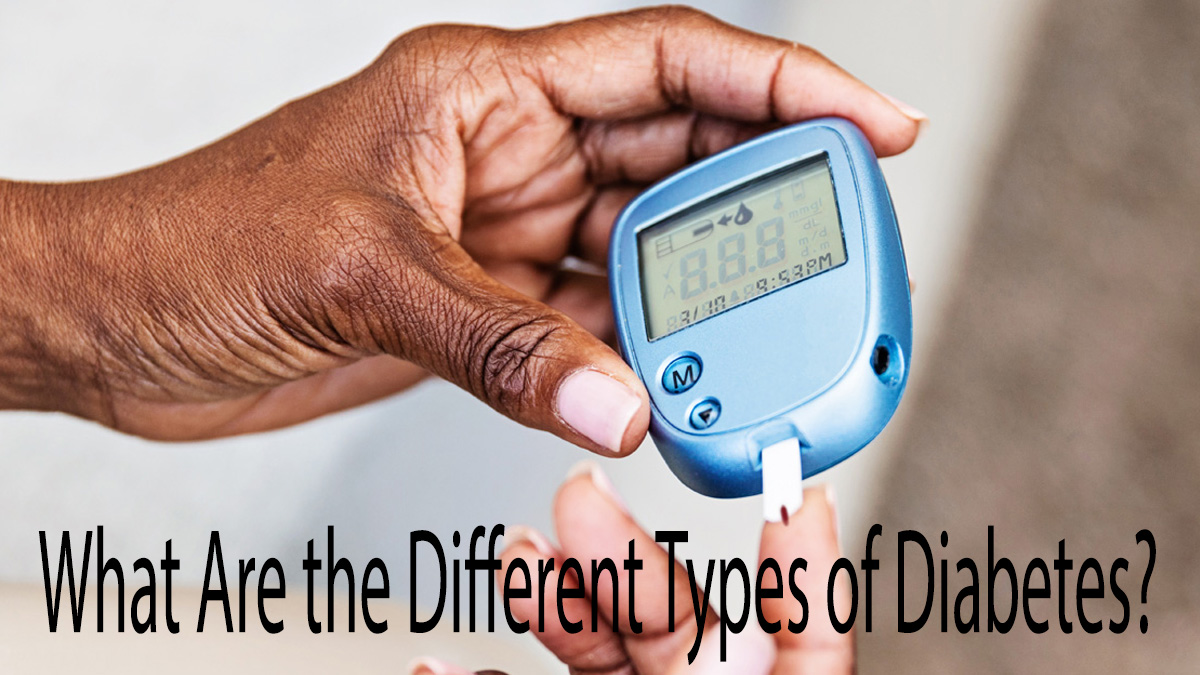There are several different types of diabetes. Type one diabetes develops before the age of 35. People with Type 2 diabetes develop it later in life. If you have diabetes, it’s important to know the signs and symptoms of each type. Listed below are the most common types of diabetes: type 1 and type 2.
Types of Diabetes : Prediabetes
While you may not have a physical symptom of prediabetes, you should take steps to lower your risk of developing diabetes. Managing your health is crucial and a visit to the Mayo Clinic can provide free health information and expert advice on how to manage your health. You can even take medications that can delay the development of diabetes in people with prediabetes. Even if you are not at risk for diabetes, you should discuss the risks and benefits of certain treatments with your healthcare provider.
There are two main types of diabetes: type 1 and type 2. The former is diagnosed when your body is unable to produce enough insulin to properly manage blood sugar levels. Type 2 diabetes, on the other hand, occurs when your body fails to properly use insulin. People with type 2 diabetes require insulin or pills to control their blood sugar levels. The latter type of diabetes can develop in children, teenagers, and young adults. Prediabetes is a stage between Type 1 and Type 2 diabetes. You can be diagnosed with prediabetes through routine medical and clinical tests.
The best way to manage prediabetes is to learn as much as you can about the disease and make changes to your lifestyle to prevent the onset of full-blown diabetes. Starting small and celebrating your progress can help you make the necessary changes to improve your health. By modifying your diet and increasing your physical activity, you can reverse prediabetes and improve your overall health. If you have already been diagnosed with prediabetes, you can also enroll in a lifestyle program geared specifically for people with prediabetes. The program can help you eat healthy and manage your blood sugar levels and your blood pressure.
Types of Diabetes: Type 1 diabetes
Although people with type 1 diabetes can lead normal lives, they must take certain precautions. To start, people with the disease must regularly check their blood sugar levels. To do this, they should use a glucometer, which measures the glucose in a pinprick of blood. Another option is to use a continuous glucose monitor, which measures your blood sugar levels every few minutes. Although it can be difficult to check your blood sugar, you should do so as often as you feel the need to.
Researchers are currently trying to find a cure for type 1 diabetes, but for now, preventing it is the best way to manage the disease. While prevention and delaying diabetes are the ultimate goals, a few treatments have been identified that help protect beta cells. These treatments include oral insulin, drugs used to treat psoriasis, and peptide immunotherapies that retrain killer T cells. These treatments are only a fraction of the options available.
Insulin is a hormone produced by the pancreas that moves glucose from the bloodstream into the cells in the body. Without insulin, glucose cannot enter cells and causes various health complications. Some problems may occur immediately, while others may develop over time and show up later in life. In people with type 1 diabetes, the immune system destroys pancreatic insulin-making cells. This results in a buildup of glucose in the bloodstream. Without insulin, the body will not be able to use the glucose for energy.
When insulin is administered to a person with type 1 diabetes, they must take insulin every day to keep their blood sugar levels normal. They may take short-acting insulin before meals, but this will vary with the amount of calories consumed and how much physical activity they have done during the next three to four hours. In addition to taking insulin, patients with type 1 diabetes will need to check their blood sugar levels frequently. It is important to ask your doctor about their target blood sugar levels.
Types of Diabetes : Type 2 diabetes
If you suspect you have type 2 diabetes, your doctor may recommend you undergo a glucose meter. The device measures your blood sugar by pricking your finger with a lancet and obtaining a tiny drop of blood. The blood is then collected on a test strip and placed on the meter. The machine then gives you a reading of your blood sugar. In most cases, you only need to test your blood sugar levels once or twice per day, or a few times a week. However, you may need to test your blood sugar level regularly, especially before meals and before bedtime.
Your healthcare provider may also recommend you take medications to lower your cholesterol and reduce your blood sugar. You may also be prescribed statins, which are drugs used to lower cholesterol. Getting the right kind of exercise is essential to your overall health. In addition to physical activity, you should also eat a balanced diet. Eat small portions, choose foods that contain less fat, and drink water instead of sweetened beverages. Your health care team can offer you advice on the best exercise to perform.
In type 2 diabetes, the body cannot use insulin properly, which makes it difficult to burn glucose for energy. Glucose enters the cells through the liver, where it is converted to energy. The liver breaks down glycogen, a storage form of glucose. As a result, the glucose in the bloodstream builds up. Insulin-producing beta cells in the body don’t function properly, and therefore, the blood sugar levels rise.
Types of Diabetes : Gestational diabetes
If you’re expecting a child, you may be concerned about gestational diabetes. If you’re a woman with gestational diabetes, you’re not alone. Your health care team is ready to help you make the changes necessary to ensure the health of your baby. If you have diabetes, you’re already on a diet that’s likely to cause high blood sugar. Here are some tips to help you eat right while you’re pregnant.
During pregnancy, your body makes more insulin than usual. This is common during pregnancy, but a pregnant woman with gestational diabetes may have a higher level of insulin than usual. Your pancreas produces insulin, which helps manage nutrient metabolism in your body. Insulin helps you absorb glucose from your bloodstream and store it in your tissues. However, during pregnancy, hormone levels can increase and your body may not produce enough insulin.
High glucose levels can also cause your baby to grow larger than normal, a condition known as macrosomia. This can cause your baby to be large and face problems during delivery, including shoulder dystocia. In addition, the lack of oxygen during birth can damage the baby’s brain. If you’ve had diabetes before, you’re at higher risk for developing the condition. Gestational diabetes can increase your baby’s risk of developing obesity, heart disease, and seizures.
After delivery, your health care provider may suggest self-testing for high blood sugar. It’s easy to test your blood sugar levels with a finger pricking device. The test will tell if you have gestational diabetes or not. In addition, you’ll have to stay healthy and exercise to prevent gestational diabetes and the disease that comes with it. And if you’re already taking diabetes medication, your health care provider may recommend frequent visits.
Types of Diabetes : MODY
MODY type of diabetes is a type of hereditary diabetes, which affects one to two percent of individuals under 35 in the United States. In this condition, mutations in one gene are responsible for the disease. The mutation occurs in the gene HNF1A (hepatocyte nuclear factor 1a), which is found on chromosome 12q24. The disorder is often mistaken for other types of diabetes, such as type 1 or type 2.
Both MODY1A and MODY4A have similar symptoms, which often come on suddenly. High blood sugar levels in both conditions lead to frequent urination and excessive thirst. Patients may also become fatigued or lose weight. In some cases, uncontrolled high blood sugar may damage small blood vessels in the eye, leading to diabetic retinopathy. This condition may eventually result in blindness. While the early signs of MODY are similar, the symptoms vary between patients.
The symptoms of MODY include pancreatic atrophy and several forms of kidney disease. One mutation in the HNF-1 beta gene, a transcription factor, causes approximately 5%-10% of the disease. Another mutation in the gene encoding insulin is associated with MODY8, and causes 1% to 2% of all MODY cases. A family history of diabetes is often present, and MODY patients often have a strong family history. The symptoms of MODY often appear in the second to fifth decade.
People with this condition are more likely to develop type 2 diabetes than to develop type 1 diabetes. Symptoms of HNF1A/HNF4A mutation may cause diabetes later than the usual 25-year-old cutoff. Furthermore, the presence of GCK-MODY in older populations is low, and hyperglycemia may not be an accurate indicator of type 2 diabetes. However, symptoms of MODY may include high blood glucose or a persistently elevated blood sugar level.
People also read : What Causes Diabetes? – Learn Why Cholesterol and Triglycerides

